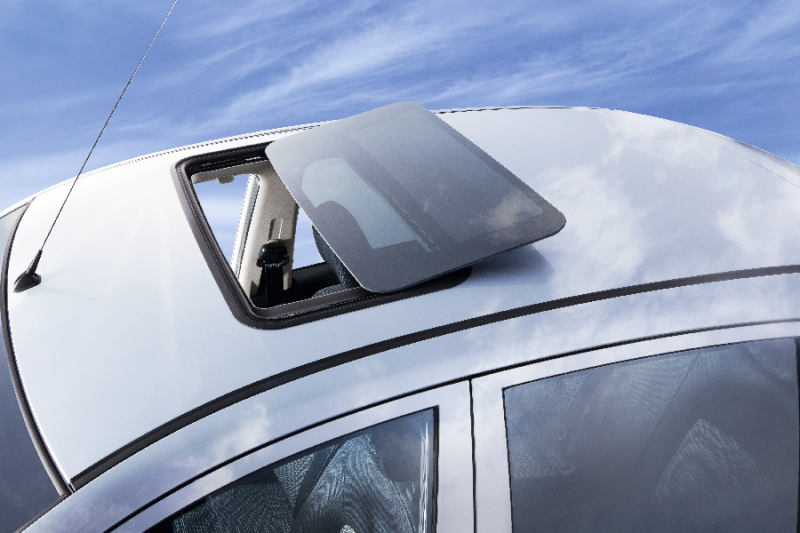Comprehensive Overview of the Automotive Sunroof Market and Its Role in Modern Vehicle Design

The automotive sunroof market has evolved significantly in recent years, becoming an essential part of modern vehicle design. Once considered a luxury feature found only in high-end models, sunroofs are now commonly available across a wide range of vehicles. Their growing popularity stems from shifting consumer preferences, advancements in technology, and manufacturers’ efforts to offer enhanced comfort, aesthetics, and driving experience. This article presents a detailed overview of the current state of the automotive sunroof market, including trends, segmentation, demand drivers, and future outlook.
Market Definition and Scope
A sunroof is an opening on the roof of a vehicle, typically covered with glass or a movable panel, that allows light and fresh air into the cabin. Depending on the design and mechanism, sunroofs can be manually or electronically operated. The automotive sunroof market encompasses the design, development, production, and sales of various sunroof systems used in passenger cars, sports utility vehicles (SUVs), electric vehicles (EVs), and luxury sedans.
As consumer expectations evolve, the scope of this market has expanded beyond basic sunroof systems to include panoramic roofs, solar-integrated panels, and intelligent features like rain sensors and anti-pinch functions.
Key Market Segments
The sunroof market is typically segmented by:
-
Type: Pop-up, inbuilt, tilt-and-slide, panoramic, and solar sunroofs. Panoramic sunroofs have become the most in-demand due to their expansive glass panels and luxury feel.
-
Material: Predominantly glass and fabric. Glass sunroofs dominate due to their sleek design, visibility, and durability.
-
Vehicle Type: Widely used in passenger vehicles, especially mid-range and luxury cars. Increasing adoption is also noted in electric and hybrid vehicles.
Each segment caters to different price points and customer preferences, making sunroof options more accessible than ever before.
Market Drivers
Several factors are fueling the steady growth of the automotive sunroof market:
-
Changing Consumer Preferences: Modern buyers place higher value on comfort, aesthetics, and overall driving experience. Sunroofs offer both functional and visual enhancements, making them a highly desirable feature.
-
Rising Demand for SUVs and Crossovers: These vehicle types are ideal platforms for sunroof integration due to their size and cabin space. The global popularity of SUVs directly supports sunroof market expansion.
-
Technological Advancements: Sunroofs now feature electric motors, smart glass, remote control, UV protection, and automated rain detection. These advancements improve safety and convenience, broadening the appeal of sunroof-equipped vehicles.
-
Availability in Mid-Range Cars: Sunroofs were once exclusive to luxury vehicles, but manufacturers are now offering them in more affordable models, responding to growing consumer demand for premium features at competitive prices.
Challenges in the Market
Despite its promising growth, the automotive sunroof market faces certain challenges:
-
Weather and Climate Constraints: In regions with extreme weather conditions, the practicality of sunroofs can be limited, affecting consumer interest in those areas.
-
Maintenance and Repair Costs: Sunroofs add mechanical complexity to a vehicle and can lead to issues such as leaks or motor failure over time. Repairing these features can be costly if not properly maintained.
-
Impact on Efficiency: While advancements have minimized this, sunroofs can slightly increase vehicle weight and reduce aerodynamic efficiency, which may affect fuel consumption.
Nonetheless, ongoing innovations in materials and design are helping to mitigate these challenges and maintain strong consumer interest.
Regional Market Outlook
-
Asia-Pacific: Leading the market in terms of growth, thanks to rising vehicle ownership, economic development, and urbanization. Countries like China and India are key contributors.
-
Europe: A mature automotive market with high demand for advanced features. European consumers often seek luxury and comfort, making sunroofs a valued addition.
-
North America: Strong adoption of SUVs and luxury vehicles contributes to sunroof market demand. Consumers are also drawn to larger, panoramic designs.
-
Latin America & Middle East: Emerging regions with increasing interest in feature-rich vehicles, particularly among urban middle-class consumers.
Competitive Landscape
The sunroof market features a mix of global automotive suppliers and regional manufacturers. Companies are investing in research and development to introduce lighter, more efficient sunroof systems that align with industry trends like electrification and sustainability. Strategic partnerships between car manufacturers and sunroof system providers ensure innovation while maintaining production efficiency.
Competition is also increasing around value-added features, such as integrated ambient lighting, smart tinting, and expanded surface areas, particularly for panoramic roofs.
Future Outlook
The automotive sunroof market is expected to maintain a healthy growth trajectory over the next several years. Key factors shaping its future include:
-
Integration with electric vehicles and solar energy harvesting
-
Use of sustainable and lightweight materials
-
Expansion into emerging markets
-
Greater focus on automation and personalization
As vehicles become more intelligent and experience-focused, sunroofs will play an even greater role in design and function. The market is poised for innovation that not only enhances user comfort but also aligns with global environmental goals.
Conclusion
The automotive sunroof market is no longer a niche—it's a fast-growing and essential segment of the vehicle industry. With continuous innovation, rising consumer expectations, and broader accessibility across vehicle types, sunroofs are redefining the driving experience. As global demand continues to rise, the sunroof market stands ready to shape the next generation of automotive design.
- Art
- Causes
- Crafts
- Dance
- Drinks
- Film
- Fitness
- Food
- Games
- Gardening
- Health
- Home
- Literature
- Music
- Networking
- Other
- Party
- Religion
- Shopping
- Sports
- Theater
- Wellness


